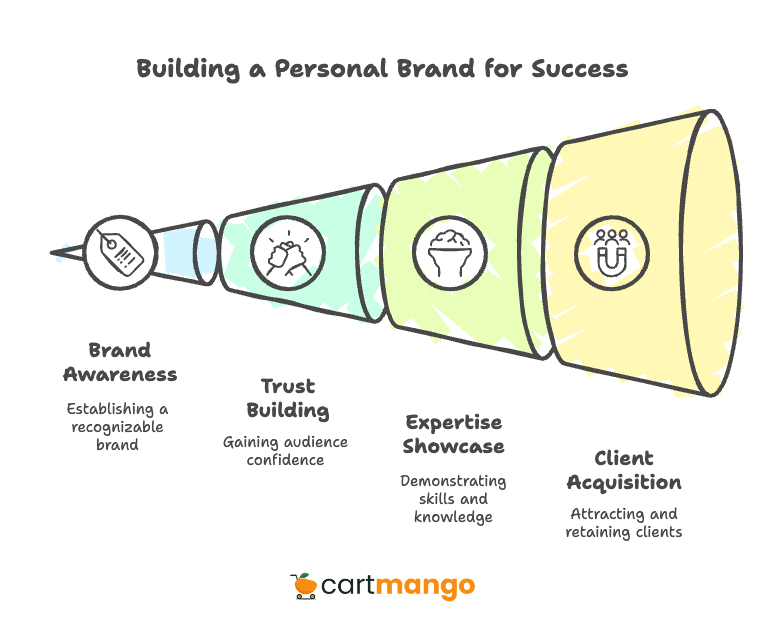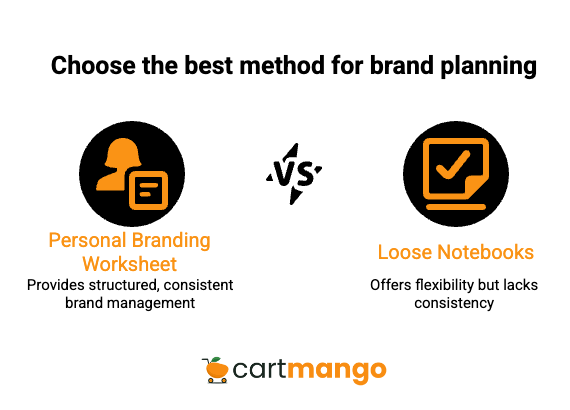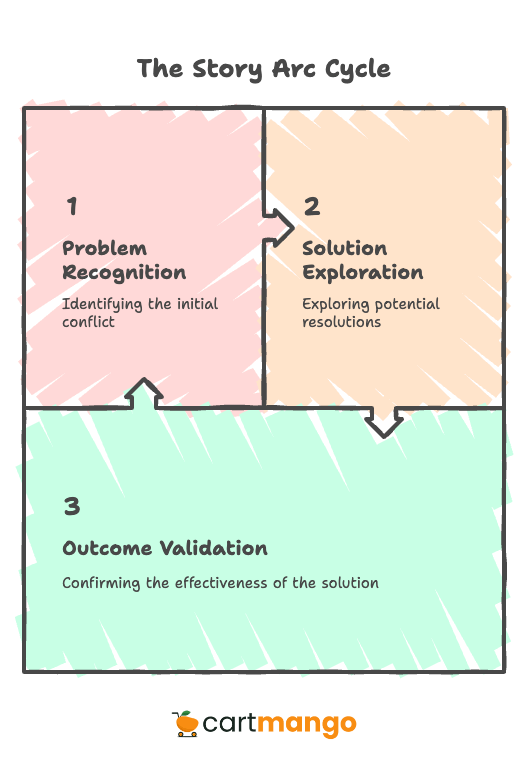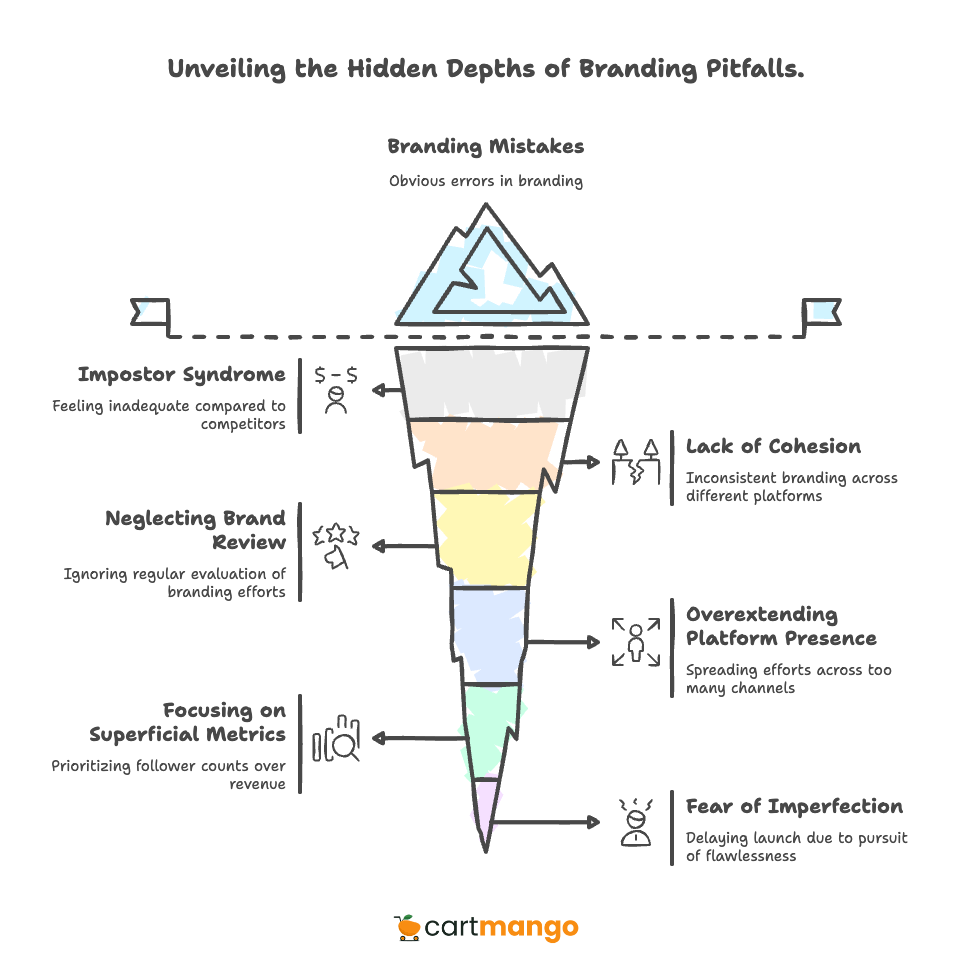To grab the editable personal branding worksheet in Google Sheets, go here.
–
Scrolling a feed has replaced flipping a resume.
79% of companies didn’t hire job applicants because of what they found on their social media accounts, according to research by The Manifest.
Trust now moves in the other direction, too. People place more confidence in individuals than in companies.
If you create courses, coach clients, or sell digital PDFs… that shift lands on your doorstep.
A clear personal brand makes your name a shortcut in a buyer’s mind. I built a Google Sheets Personal Branding worksheet to hold the nuts and bolts, yet the tool only matters when paired with the right thinking.
Your brand is the bridge between expertise and income. Without it, you’re shouting into the void while competitors with weaker skills but stronger brands steal your clients.

What Is a Personal Branding Worksheet?
A personal branding worksheet is a decision vault. It locks your purpose, audience knowledge, core message, visual choices, and progress checkpoints into one document.
Loose notebooks fade.
The worksheet stays visible, so every new post or slide deck can pull from one source of truth. Consistency then becomes habit rather than effort.
Because each choice lives in its own tab, you can update a single element without rewriting everything else. Over time the sheet shows patterns, revealing how early brand moves feed later revenue.
Think of it as your brand’s operating system. Every decision gets filtered through these core components, saving you from reinventing yourself with each new project or platform.
So why choose a worksheet format over other brand planning methods? The answer lies in how structured thinking translates to consistent action.
Why a Worksheet Beats Loose Notes

Benefit | Payoff for Solo Creators |
|---|---|
Reflection | Spot genuine differentiators instead of clichés |
Accountability | Goals stare back at you on review day |
Storytelling | A ready statement saves you from rambling bios |
Consistency | Fonts, colors, and tone stay in sync across channels |
Social accounts posting on a regular cadence earn higher trust scores than those posting in bursts (Source: Buffer). A worksheet nudges that rhythm by turning ideas into an organized calendar rather than scattered sticky notes.
The pain of scattered notes hits hard when you’re staring at a blank bio box at 11 PM, trying to remember how you described your methodology last month. Your worksheet becomes the lifeline that pulls you out of that quicksand.
These benefits only matter if you know what to put in the worksheet. That brings us to the 8 core elements that separate strong personal brands from forgettable ones.
8 Core Components That Shape Your Personal Brand
These 8 ideas sit at the heart of the worksheet. Treat each as a lever you can pull when growth stalls.
# | Component | Why It Matters | Practical Strategy |
|---|---|---|---|
1 | Purpose & Vision | Provides a compass for product decisions | Tie future impact to one concrete metric and deadline so every launch pushes the same direction. |
2 | Guiding Values | Signals cultural fit to premium buyers | Pick three words you would defend even if it costs today’s sale; bake them into policies and public replies. |
3 | Audience Personas | Transforms vague “followers” into real people | Focus on a single burning problem and a clear desired outcome. Picture daily tools, budgets, and search habits before writing any content. |
4 | Unique Value Proposition | Explains why someone chooses you not a look-alike | Craft one short sentence that combines your skill, the buyer’s need, and a measurable result. Keep it under twenty words so it fits a headline. |
5 | Signature Story Arc | Adds emotion that credentials alone cannot carry | Frame your journey in 3 beats: the struggle that forced growth, the turning point that proved your method, and the mission to guide others through the same gap. |
6 | Tone & Visual Identity | Makes strangers recognize your brand in a single scroll | Limit the palette to two primary colors and one accent; anchor voice in three adjectives and apply them to captions, emails, and support replies. |
7 | Digital Footprint Audit | Protects trust by scrubbing mixed messages | Search your name, list the top ten hits, and flag any page that undercuts the current story. Set calendar reminders to repeat the scan quarterly. |
8 | KPI Dashboard | Proves that brand work feeds income | Track email subscribers, course enrollments, referral count, and LinkedIn Social Selling Index. Review trends, not one-off spikes, to guide action. |
After you lock these 8 ideas, every bio, slide deck, and sales page writes itself because the core decisions sit one click away.
Crafting Your Story Arc
Story feeling flat? We can weave conflict and resolution without drifting into drama. This three-act structure works because it mirrors how buyers process trust:

- Problem recognition
- Solution exploration
- Outcome validation
Your story should make someone lean forward, not check their phone.
- The moment you lost your first client
- The night you rewrote your entire approach
- The email that confirmed your method worked
These moments stick because they reveal character under pressure.
Once you have these foundational elements in place, the next challenge becomes tracking whether your brand work actually moves the needle on your business goals.
Measuring Success and Iterating
Data keeps ego honest.
People who completely fill out their LinkedIn profile are 40 times more likely to get job opportunities (Source: Executive Career Brand). Pretty sure the same goes for other social media platforms.
Choose metrics that answer a simple money question:
Will this number rise if my brand grows stronger?
Email list size, booked discovery calls, and referral revenue qualify.
Progress rarely climbs in a straight line. Weekly review cycles highlight small dips before they become holes. Pair that view with a Trello content board so tasks connect to the numbers. When the worksheet flags a stall, redirect effort rather than chasing the next trend.
The beauty of tracking lies in the patterns. Three months of data reveals whether your webinar titles or your follow-up emails need work. Six months shows if your content calendar matches your buyer’s decision cycle.
Even with perfect tracking and clear brand elements, most creators still stumble over predictable mistakes. Knowing these pitfalls in advance can save months of wasted effort.
Common Pitfalls to Dodge

Copy-Paste Branding
Borrowing another coach’s voice feels safe until you sound like a carbon copy. Followers notice echoes fast. Hold up your value sentence; if it fits a rival’s site, revise.
The temptation to copy hits hardest when you’re staring at a successful competitor’s about page, feeling like your own story pales in comparison. But that impostor syndrome whisper lies: your unique path is your strongest asset.
Offline Blind Spots
A crisp Instagram grid loses power if your Zoom backdrop breaks the color scheme. Apply the same brand filters to audio intros, packaging slips, and even invoice headers. Cohesion breeds confidence.
Worksheet Abandonment
A static document gathers dust.
Schedule a 15-minute “brand retro” every month. Review red flags, mark the next focus, then close the sheet. Momentum comes from brief, regular check-ins, not marathon clean-ups.
The worksheet should feel like a trusted advisor, not a homework assignment. If you’re avoiding it, the problem isn’t the tool – it’s the approach.
Platform Sprawl
Opening an account on every shiny network splits attention. Double down on two channels where your buyers research solutions.
Vanity Metric Addiction
Follower counts flatter but rarely feed bank accounts. Revenue per subscriber beats raw totals. Keep applause data in a side column so it never blurs decision making.
Perfection Paralysis
Waiting for flawless fonts or lighting leaves you silent while competitors publish.
Ship version one, gather feedback, then refine during quarterly audits.
The fear of judgment keeps more creators broke than bad marketing ever could. Your imperfect action beats their perfect inaction every time.
For creators ready to go beyond the basics, these strategies can accelerate brand recognition and business growth.
More Brand Strategies
Color Psychology in Personal Branding
Colors trigger emotional responses before conscious thought kicks in.
- Blue builds trust but feels corporate.
- Orange sparks energy but can overwhelm.
- Green suggests growth but might signal inexperience.
- Your color palette should match the emotion you want buyers to feel when they think of your name.
Content Amplification Strategy
One piece of content should generate five touchpoints.
A single blog post becomes a newsletter, three social posts, a podcast topic, and a client case study.
This multiplication effect turns your worksheet into a content machine rather than a filing cabinet.
Networking Through Brand Consistency
Your brand should precede you into every room. When someone mentions your name, listeners should immediately picture your area of expertise and communication style. This level of recognition takes years to build but pays dividends.
The Role of Storytelling
Your story arc connects emotionally and makes your brand memorable. Sharing struggles invites loyalty and eases marketing.
Set Your Priorities
Focus on the brand parts that impact revenue and audience connection first.
- Purpose, personas, and your unique value proposition come first.
- Tone, visuals, cleanup, and KPIs follow.
Complete Brand Identity Map
Building on the strategies above, your next step involves creating a comprehensive brand identity that goes deeper than surface-level choices. This is where many solo creators have a hard time because they start thinking about brand identity as just logos and colors.
Your brand identity covers every aspect of how people perceive your business. It’s the key foundation that helps you attract the right customers while repelling the wrong ones. To gain clarity on this, you need to define what your brand truly represents in your industry.
Target Audience vs Target Market

Here’s where insight matters most. Your target audience refers to the specific person you speak to in your content. Your target market covers the broader group of customers who might buy from you.
Think about it this way: your target audience might be “overwhelmed course creators struggling with tech setup,” while your target market includes anyone selling online courses who needs streamlined systems.
This distinction helps you fill the gap between broad appeal and specific connection. When you understand both layers, your marketing communications become sharper and more relevant to the people who matter most.
Emotional Connection
Moving from audience clarity to emotional resonance, your brand identity map should explore the emotional territory where you want to stand. This requires you to identify your top values and determine how they form the backbone of every service you offer.
Most creators struggle to accomplish this because they focus on what they do rather than why it matters. Your principles create the emotional connection that turns browsers into buyers.
To develop these principles:
- Explore what integrity means in your industry
- Define the specific challenges your ideal person faces daily
- Understand how your approach differs from your competition
- Identify the specific niche where you can truly leverage your expertise
Brand Tagline and Messaging
Your tagline becomes the shortest form of your brand identity. It should capture your essence in a way that helps your team (even if that team is just you) stay consistent across all marketing communications.
Tips for tagline development:
- Keep it under 8 words
- Make it relevant to your target audience’s daily struggles
- Ensure it reflects your top values
- Test it with real customers before committing
The messaging framework flows from your tagline. Every email, post, and service description should connect back to this core message, creating a consistent perception in your market.
Next Steps for Bringing YOUR Worksheet to Life
A worksheet does not replace creativity; it removes the fog around it.
With purpose, values, and metrics on one screen, you spend less time second-guessing and more time serving buyers. Open the sheet today, set a 30-minute timer, and give your brand a fixed address online. Next month you will thank the hour you invested.
Your brand is not a luxury for when you “make it”. It’s the vehicle that gets you there. The worksheet is your roadmap, but you still have to drive.
Related
- Sellfy vs Payhip: The Recurring Revenue Prison (2026)
- Podia vs Gumroad: The Recurring Revenue Handcuffs (2026)
- SendOwl vs Gumroad: The Recurring Revenue Black Hole (2026)
- Gumroad vs Sellfy: The Vendor Lock-in Cage (2025)
- Gumroad vs Payhip: The Hidden Trap for Creators (2025)
- ThriveCart vs SamCart – The Subscription Hostage Trap (2025)
- 8 ThriveCart Alternatives & The Lifetime Pricing Paradox (2025)
- 8 SamCart alternatives + Subscription hostage (2025)
- The GENTLE Method: Soft marketing for creators
- How Far in Advance Should You Promote a Webinar?
